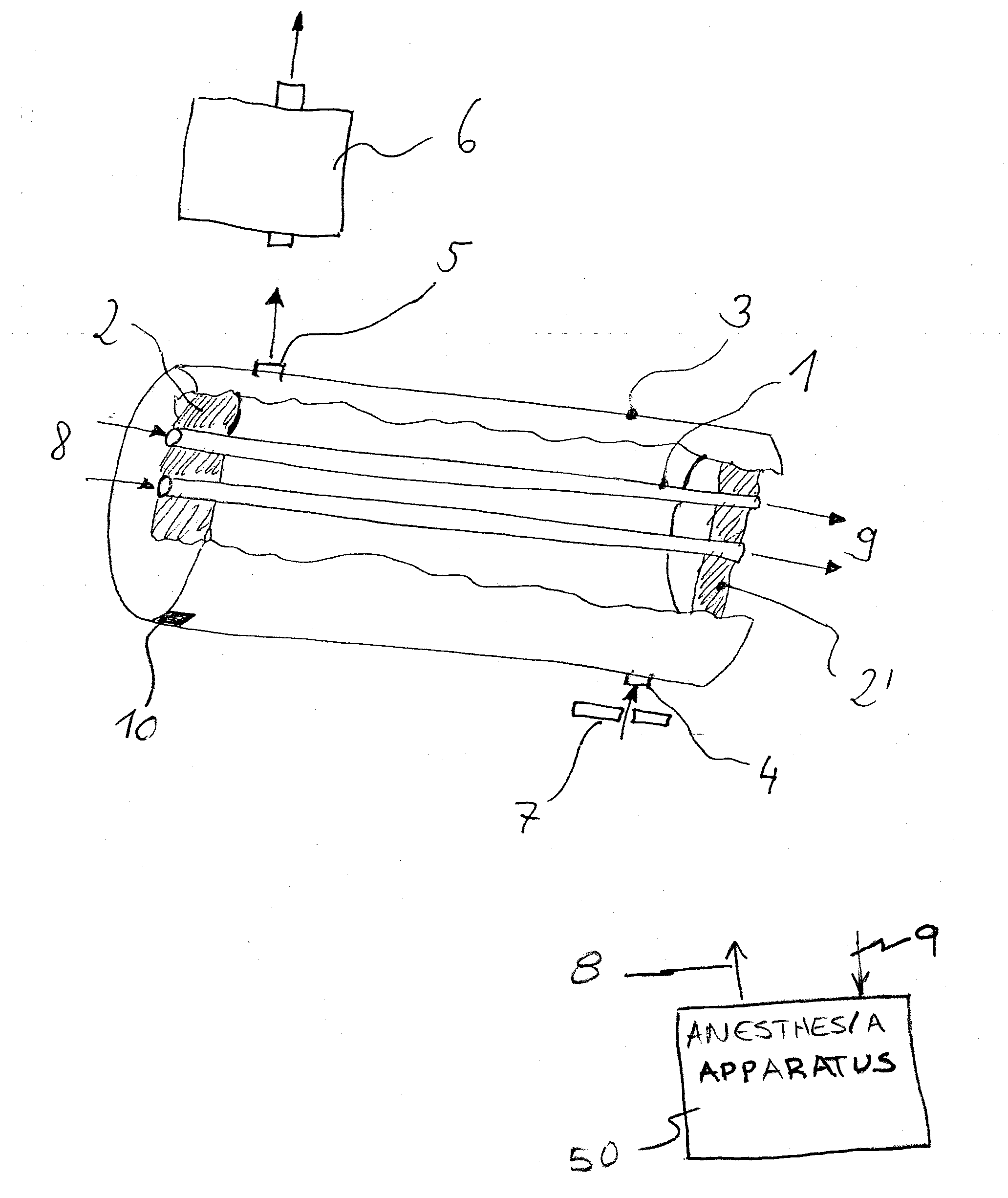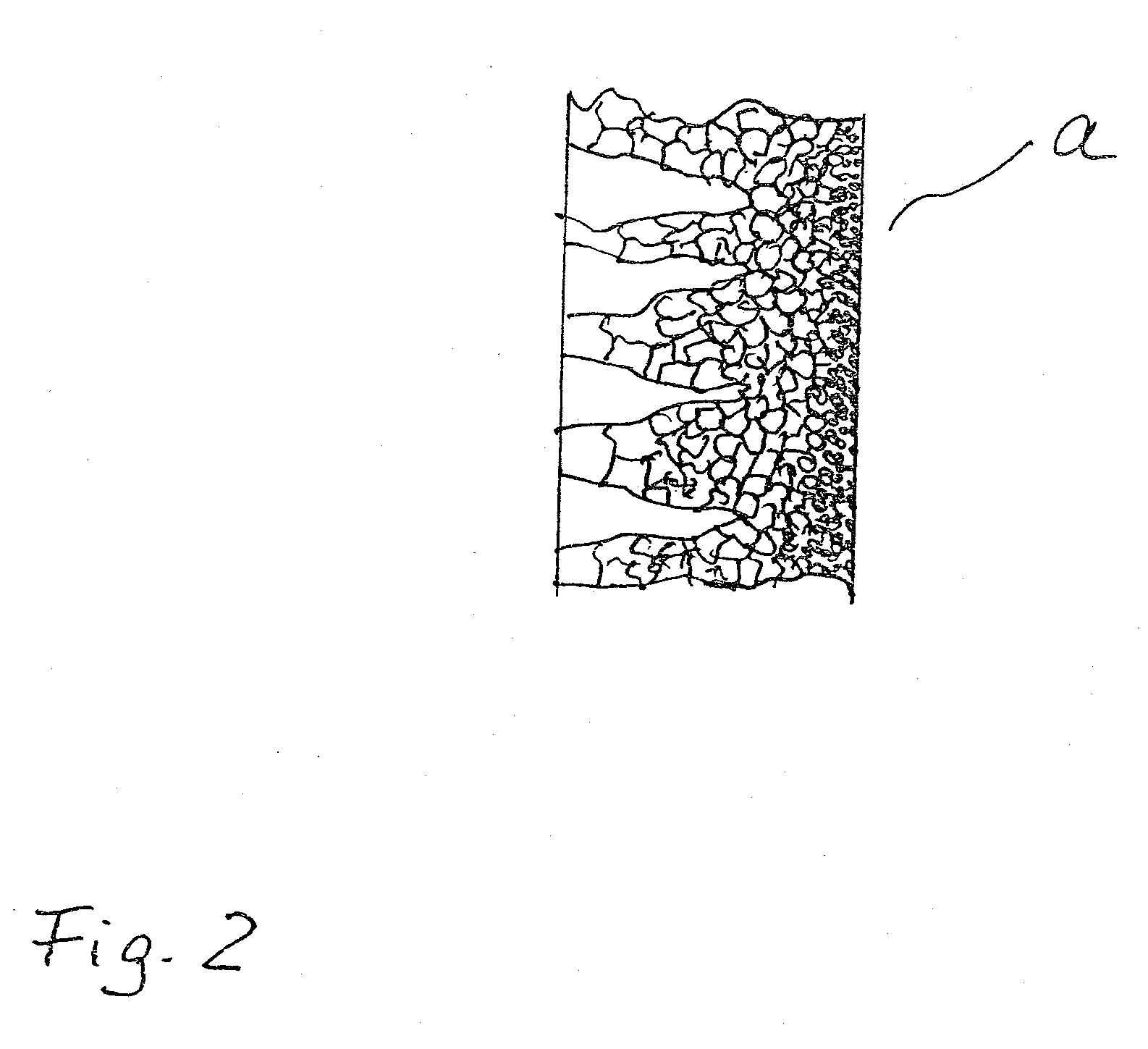Process and device for separating carbon dioxide from a breathing gas mixture by means of a fixed site carrier membrane
a technology of carbon dioxide and breathing gas, which is applied in the direction of membranes, separation processes, respirators, etc., can solve the problems of insufficient certainty of the state of saturation of lime filling, increase of respiratory stimulus, and decrease of absorption effectiveness, so as to achieve high selectivity of co2 separation, the effect of low cost and safe us
- Summary
- Abstract
- Description
- Claims
- Application Information
AI Technical Summary
Benefits of technology
Problems solved by technology
Method used
Image
Examples
Embodiment Construction
[0039]Referring to the drawings in particular, FIG. 1 shows a counterflow hollow fiber membrane module, with hollow fibers 1, integrated in the expiratory branch of the breathing gas guide as a separating element for separating carbon dioxide from the expiratory breathing gas mixture, which may contain, among other things, halogenated hydrocarbons. This counterflow hollow fiber membrane module has a number of hollow fibers 1 extending in parallel, whose walls are formed by a selective, semipermeable membrane. The positions of the hollow fibers 1 extending in parallel are stabilized by their ends being molded in a common molding 2, 2′. The openings of the hollow fibers 1 remain non-closed. The entire module is shaped in the form of a cylinder, whose jacket surface is formed by a gas-impermeable wall 3. The moldings 2, 2′ are sealingly connected to the gas-impermeable wall 3. The hollow fibers 1 extending in parallel pass through the interior of the cylinder, and gas transport between...
PUM
| Property | Measurement | Unit |
|---|---|---|
| Fraction | aaaaa | aaaaa |
| Pore size | aaaaa | aaaaa |
| Partial pressure | aaaaa | aaaaa |
Abstract
Description
Claims
Application Information
 Login to View More
Login to View More - R&D
- Intellectual Property
- Life Sciences
- Materials
- Tech Scout
- Unparalleled Data Quality
- Higher Quality Content
- 60% Fewer Hallucinations
Browse by: Latest US Patents, China's latest patents, Technical Efficacy Thesaurus, Application Domain, Technology Topic, Popular Technical Reports.
© 2025 PatSnap. All rights reserved.Legal|Privacy policy|Modern Slavery Act Transparency Statement|Sitemap|About US| Contact US: help@patsnap.com



